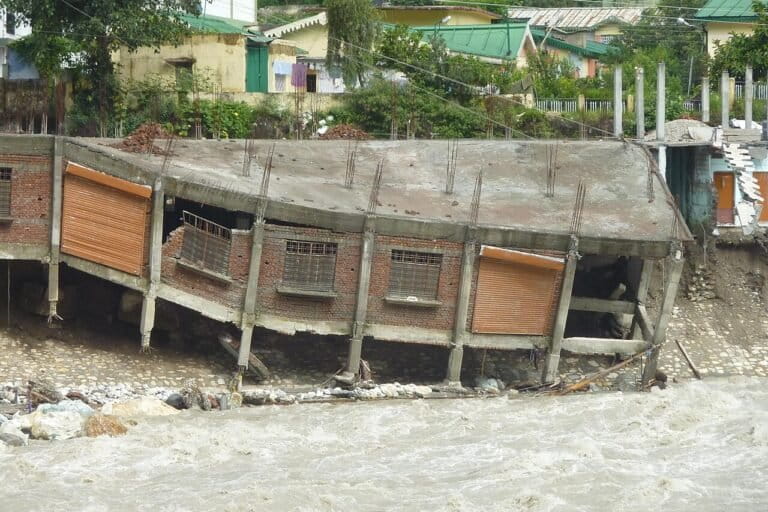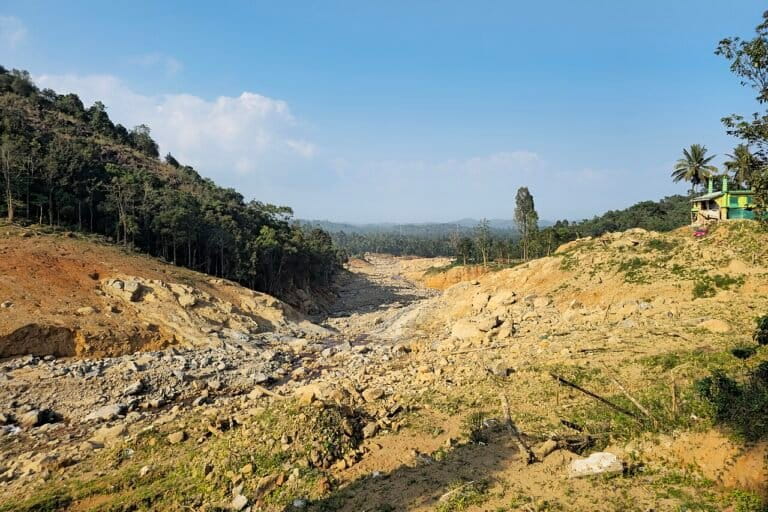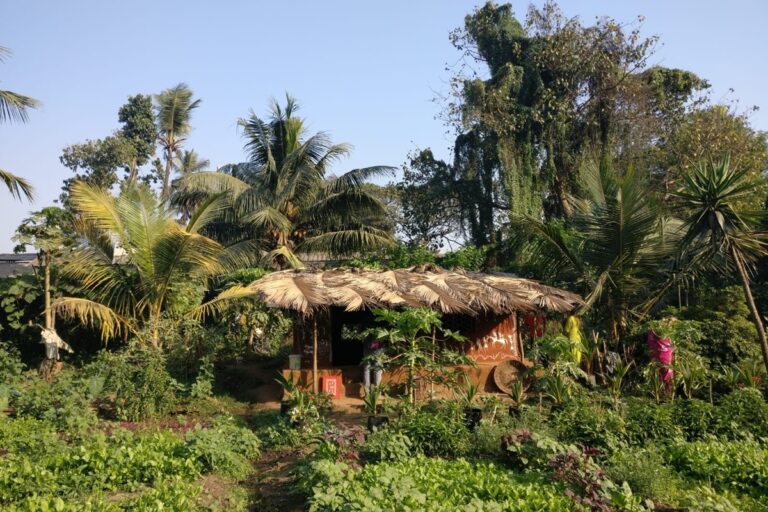- A single major disaster could result in damages worth $11 billion for India, but proactive investments in resilience can reduce these losses more than post-disaster aid, says a new study.
- Social programmes like MGNREGA show promise for climate adaptation, but India lacks cohesive financing and coordination to scale these benefits effectively.
- In 2024, India experienced extreme weather events on 255 out of 274 days, spotlighting the need for greater investments in climate adaptation.
A single one-in-twenty year disaster event could send India reeling with losses worth more than $11 billion (almost a trillion rupees) – the highest among eight countries assessed by the International Institute for Environment and Development (IIED), in a new analysis. But early investments in resilience and social programmes could cover the costs of damage for a fraction of what they cost today, the study says.
Recently, in Punjab, unusually high levels of rainfall combined with the controlled release of water from the Ranji Sagar Dam sank 176,000 hectares of farmland across 2,000 villages. The state government has estimated the extent of monetary losses to be ₹129 billion, including destruction to agriculture, infrastructure, and livestock. Severe floods were also reported in Himachal Pradesh, Uttarakhand, and Manipur this year.
India is especially in need for adaptation measures that will adequately cover the costs of escalating disasters. In 2024, India saw extreme weather events on 255 of 274 days surveyed by the Centre for Science and Environment.
The IIED study analysed four types of interventions to gauge the costs and benefits of each when it comes to disaster management, finding that more than humanitarian aid, early investments in resilience (such as employment schemes and direct benefit transfers) had the biggest impact in reducing the extent of losses from disasters.
“A lot of communities, when hit by a disaster, sell their assets. With late humanitarian responses, like post-disaster aid, you can bring losses down to 59%. But if early resilience investments are made, or anticipated direct benefit transfers are made, you can bring losses down to below 50%,” said Ritu Bharadwaj, lead writer of the study, in a press conference.
Every $1 invested in early resilience yields $5.17 in avoided losses and development gains, the study found.

Improving social protection
The study examined the disaster risk infrastructure in eight middle and low income countries across Asia and Africa, which have high vulnerability to disaster events. These were Bangladesh, Ethiopia, Ghana, India, Malawi, Pakistan, Senegal and Uganda.
To assess gaps and areas for improvement in resilience, the IIED study used an index tool called ASPIRE, which compared each country’s existing policies, systems, and social programmes with 69 indicators to assess their disaster resilience preparedness.
“What we found were two types of gaps. One is financial and technical, for example having early warning systems and digitised social protection registries to deliver aid,” said Bharadwaj. “The other is policy-level gaps that countries can address themselves without assistance. Many countries don’t acknowledge that social protection can build climate resilience, but what they’re spending on existing programmes can deliver on this too.”
India’s MGNREGA scheme, which guarantees employment in rural areas for 100 days of the year, emerged as an example of social programmes that integrate climate risks and help avert losses. In 2019, the government extended the scheme to 150 days when drought or natural calamities are notified in a rural area during that financial year, which “provide livelihood security during climate shocks,” the study says.
However, the absence of a formal finance mechanism that links disaster relief with social protection has limited India’s adaptive capacity. Though MGNREGA makes for a good example of how social protection programmes can include climate adaptation goals, the study points out that other social protection programmes don’t take the same approach.
For a one-in-twenty-year event leading to losses and damages worth $11 billion, it would cost $48.5 billion to cover this through existing social programmes. By comparison, investments in anticipatory direct benefit transfers can cover the cost in $5.4 billion, and early resilience investments can cover the cost for $2.2 billion.

Gaps and areas for improvement
Generally, national strategies for development “often continue to view social protection as reactive or consumption-oriented, missing opportunities to promote adaptation,” the IIED study says.
“The biggest problem, whether we work with the NGOs or the bankers or various funding agencies, is we don’t talk to each other. So it is very, very difficult in a government scenario to get interdepartmental coordination [for climate reslience],” said Kunal Satyarthi, joint secretary with the Ministry of Rural Affairs, in response to the IIED study. “I also believe we need to decentralise disaster management, and if communities become volunteers for disaster management, it would improve resilience the most.”
In India, climate resilience is also complicated by regulations that could subvert relief efforts. Changes to the country’s Manual for Drought Management in 2016, for example, made it more difficult for jurisdictions to declare drought, and in turn for farmers to access relief, Scroll had reported. Heat waves are also not recognised as disaster in several states, impeding disaster management funds from addressing damages caused by extreme heat.
Read more: Is India’s disaster-preparedness inclusive enough?
Banner image: A man dragging his two-wheeler during a flood in West Bengal. Image by Dibakar Roy via Pexels (CC0).














